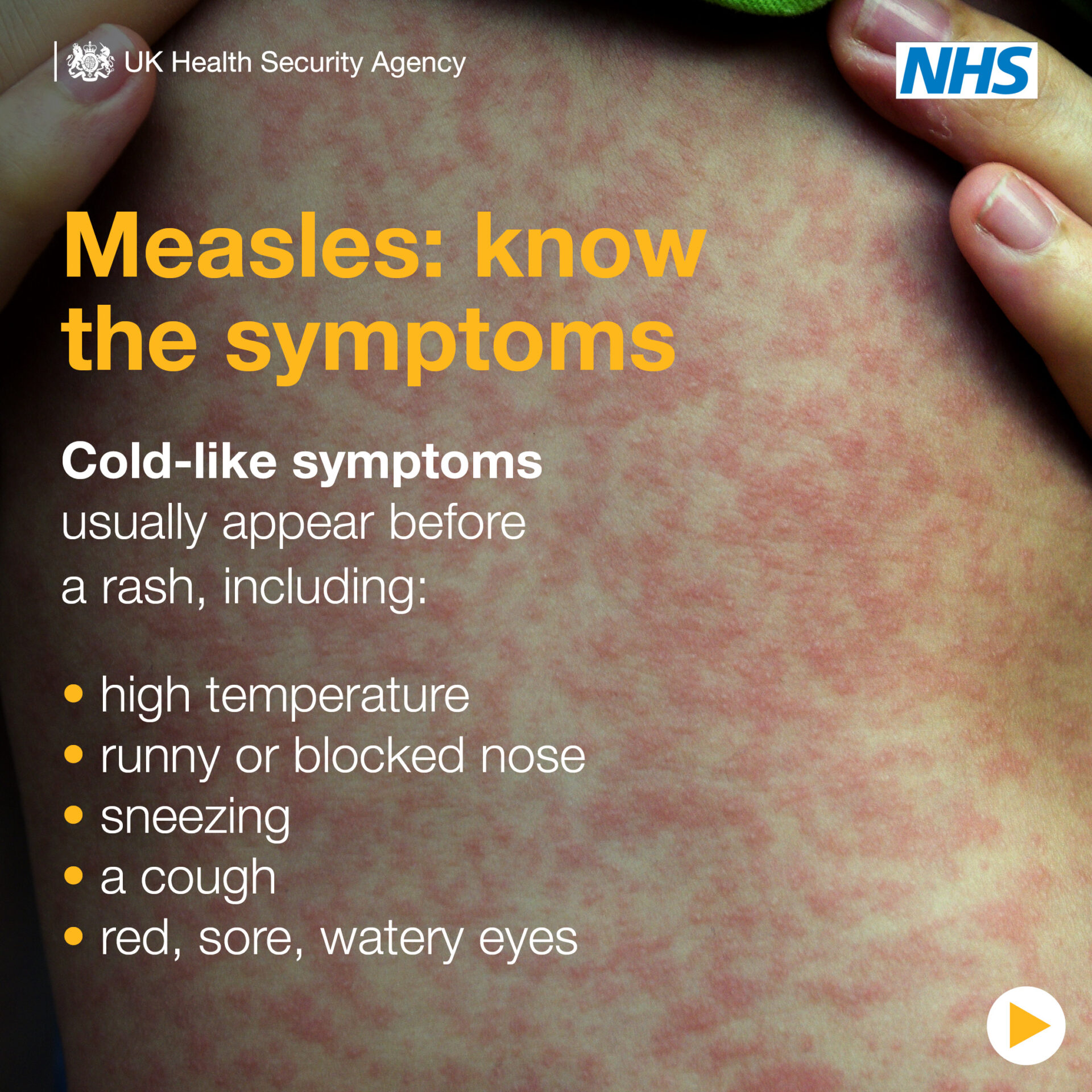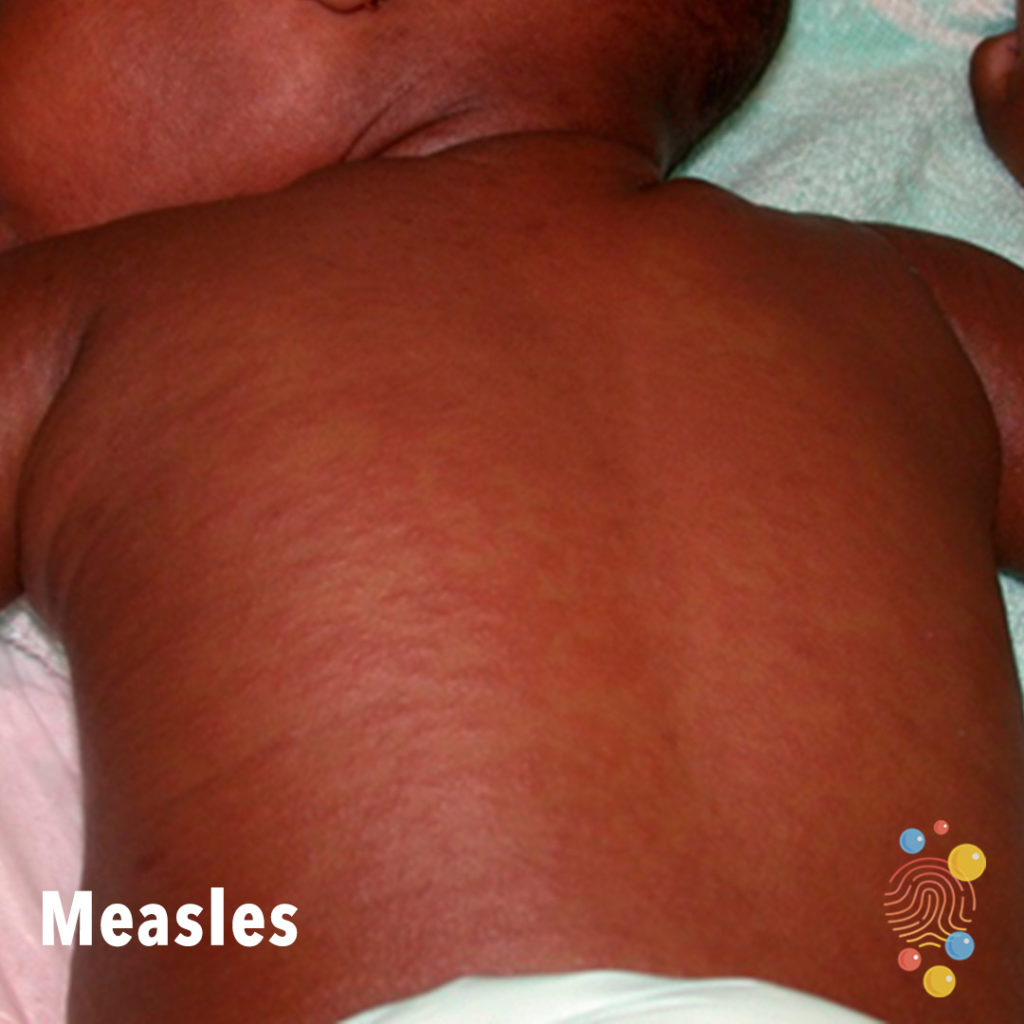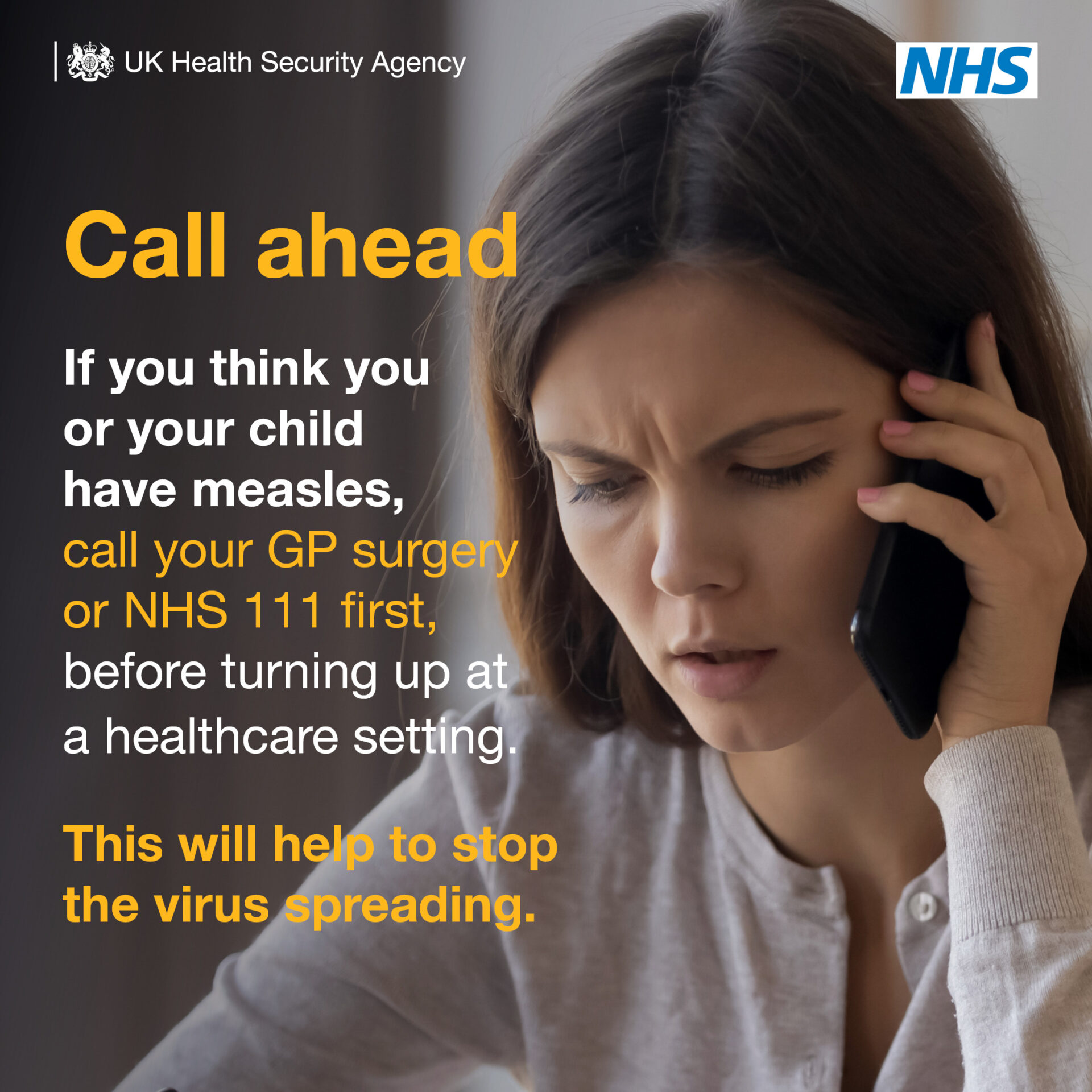Measles
Measles is an infection that spreads easily and can cause serious problems in some people. There has been an increase of measles cases in the UK. Having the MMR vaccine is the best way to prevent it.

Measles is a highly infectious and is the most infectious of all disease transmitted through the respiratory route. The most effective way to control measles is by vaccination of 2 doses of measles, mumps, and rubella (MMR). Measles is a severe disease particularly to individuals who are:
Immunocompromised
- Young infants
- Pregnancy – it can increase the risk of miscarriage, stillbirth, or preterm delivery.
Measles is caused by a virus that spreads very easily. One case of measles can infect 9 out of 10 of unvaccinated close contacts.
Transmitted through the respiratory route (airborne or droplet spread) or by direct contact with the nasal or throat secretions of infected persons
Signs and Symptoms
Prodromal phase: 2-4 days before the rash appears:
- High fever – this typically increases and peaks around onset of the rash.
- Cough
- Coryza (runny nose)
- Conjunctivitis
- Koplik spots – small white/bluish spots on the inside cheeks/back of the lips. May appear 1-4 days before the rash and disappears on day 2 of the rash (so may not be present when case presents)
Rash:
- Usually starts on the face (behind ears, on hairline)
- Spreads to trunk and rest of the body and can become generalised
- Red/brown spots, flat, with sometimes small, raised bumps on top (maculopapular) and increase over 2-3 days
- Rash gradually expands and can join to form blotchy patches particularly on the face and trunk
- Usually not itchy and no blisters
- Generally, lasts for 3 to 7 days
- More difficult to spot on dark skin
Incubation period:
10 to 12 days from exposure to onset of symptoms
Can vary up to 21 days infectious period: 4 days before onset of rash to 4 days after onset of rash.




